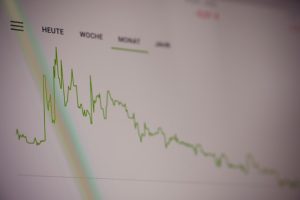Oscillators are one of the most commonly used technical indicators in forex day trading. They are used to identify potential buy or sell signals in the market by measuring the momentum of price movements. Oscillators are particularly useful when used in conjunction with other technical analysis tools, such as Fibonacci retracements, to provide a more complete picture of the market.
Fibonacci retracements are a popular tool used by traders to identify potential levels of support and resistance in the market. These levels are based on the Fibonacci sequence, which is a mathematical sequence of numbers in which each number is the sum of the two preceding numbers. The sequence begins with 0, 1, 1, 2, 3, 5, 8, 13, 21, 34, and so on.
Fibonacci retracements are calculated by identifying the high and low points of a price movement and then drawing horizontal lines at the key Fibonacci levels of 23.6%, 38.2%, 50%, 61.8%, and 100%. These levels are potential areas where the price may reverse or bounce off.
Oscillators are often used in conjunction with Fibonacci retracements to confirm potential buy or sell signals. There are several oscillators that traders commonly use in forex day trading, including the Relative Strength Index (RSI), Stochastic Oscillator, and Moving Average Convergence Divergence (MACD).
The RSI is a momentum indicator that measures the strength of price movements. It is calculated by comparing the average gains and losses over a specified period of time. The RSI is plotted on a scale of 0 to 100, with readings above 70 indicating an overbought market and readings below 30 indicating an oversold market.
When used with Fibonacci retracements, traders may look for potential buy signals when the RSI is oversold and the price is approaching a key Fibonacci level of support. Conversely, traders may look for potential sell signals when the RSI is overbought and the price is approaching a key Fibonacci level of resistance.
The Stochastic Oscillator is another momentum indicator that measures the strength of price movements. It is calculated by comparing the current price to the range of prices over a specified period of time. The Stochastic Oscillator is plotted on a scale of 0 to 100, with readings above 80 indicating an overbought market and readings below 20 indicating an oversold market.
When used with Fibonacci retracements, traders may look for potential buy signals when the Stochastic Oscillator is oversold and the price is approaching a key Fibonacci level of support. Conversely, traders may look for potential sell signals when the Stochastic Oscillator is overbought and the price is approaching a key Fibonacci level of resistance.
The MACD is a trend-following indicator that measures the difference between two moving averages. It is plotted as a histogram and a signal line, with buy signals occurring when the MACD line crosses above the signal line and sell signals occurring when the MACD line crosses below the signal line.
When used with Fibonacci retracements, traders may look for potential buy signals when the MACD line crosses above the signal line and the price is approaching a key Fibonacci level of support. Conversely, traders may look for potential sell signals when the MACD line crosses below the signal line and the price is approaching a key Fibonacci level of resistance.
In conclusion, oscillators are a useful tool for forex day traders when used in conjunction with Fibonacci retracements. They can help confirm potential buy or sell signals and provide a more complete picture of market momentum. Traders should always use multiple indicators and technical analysis tools to make informed trading decisions.





